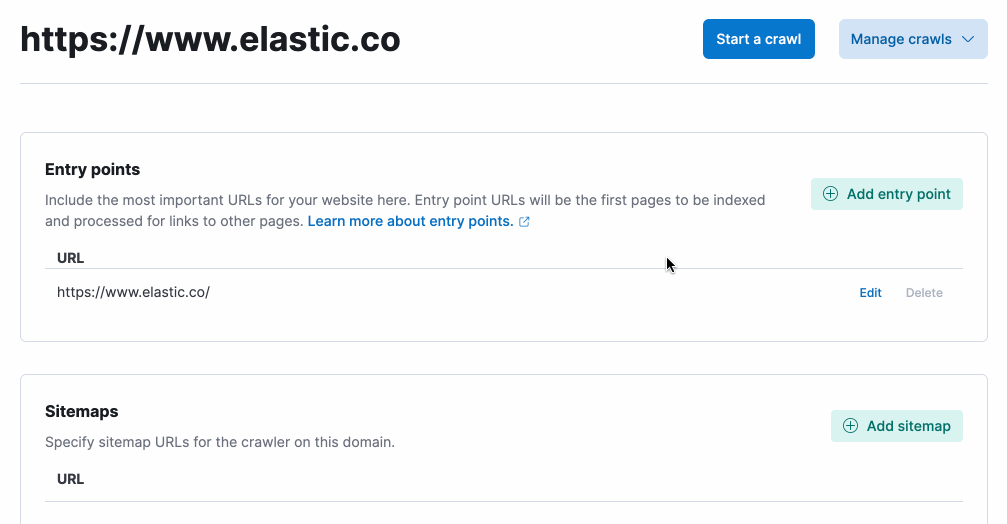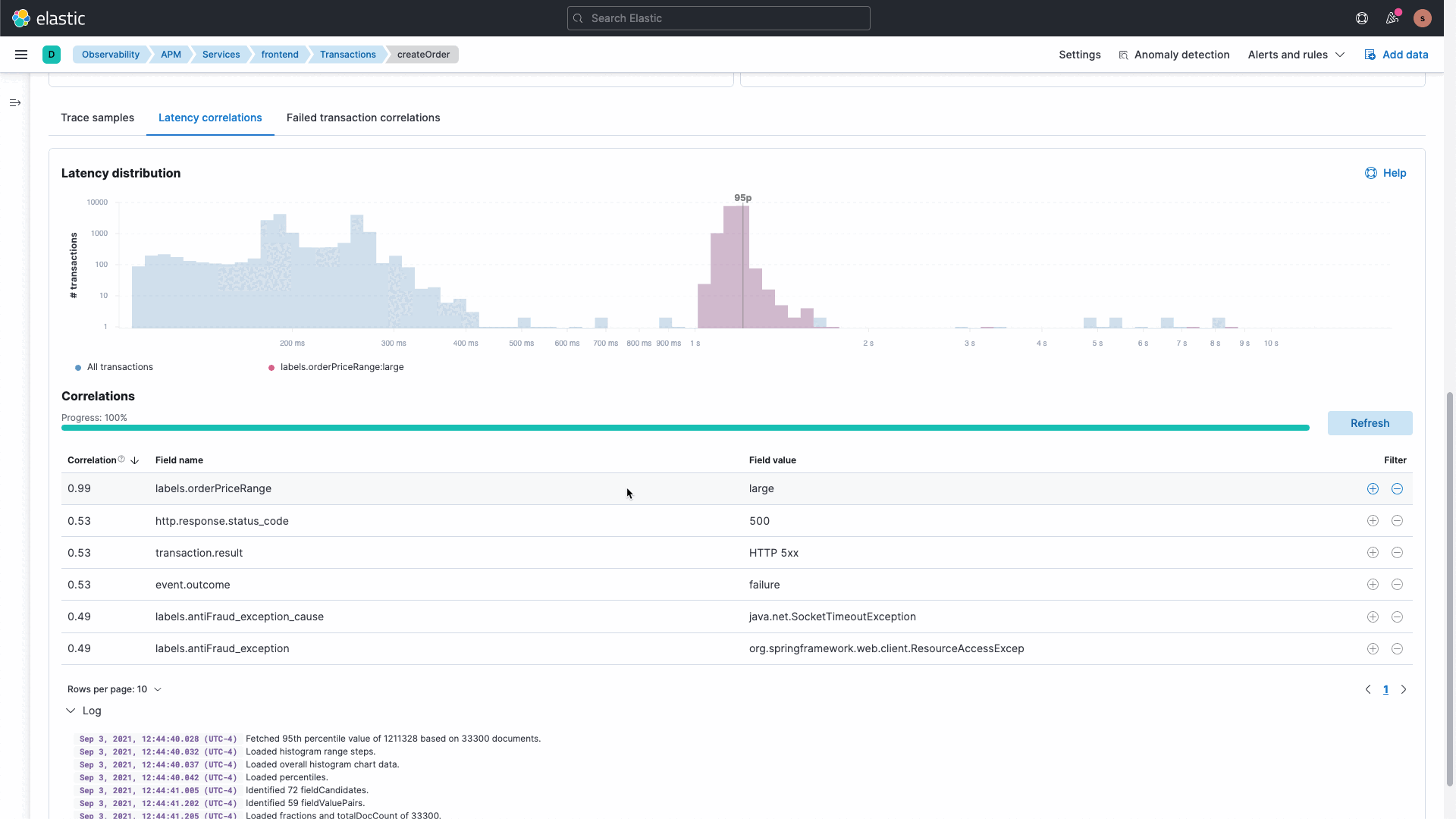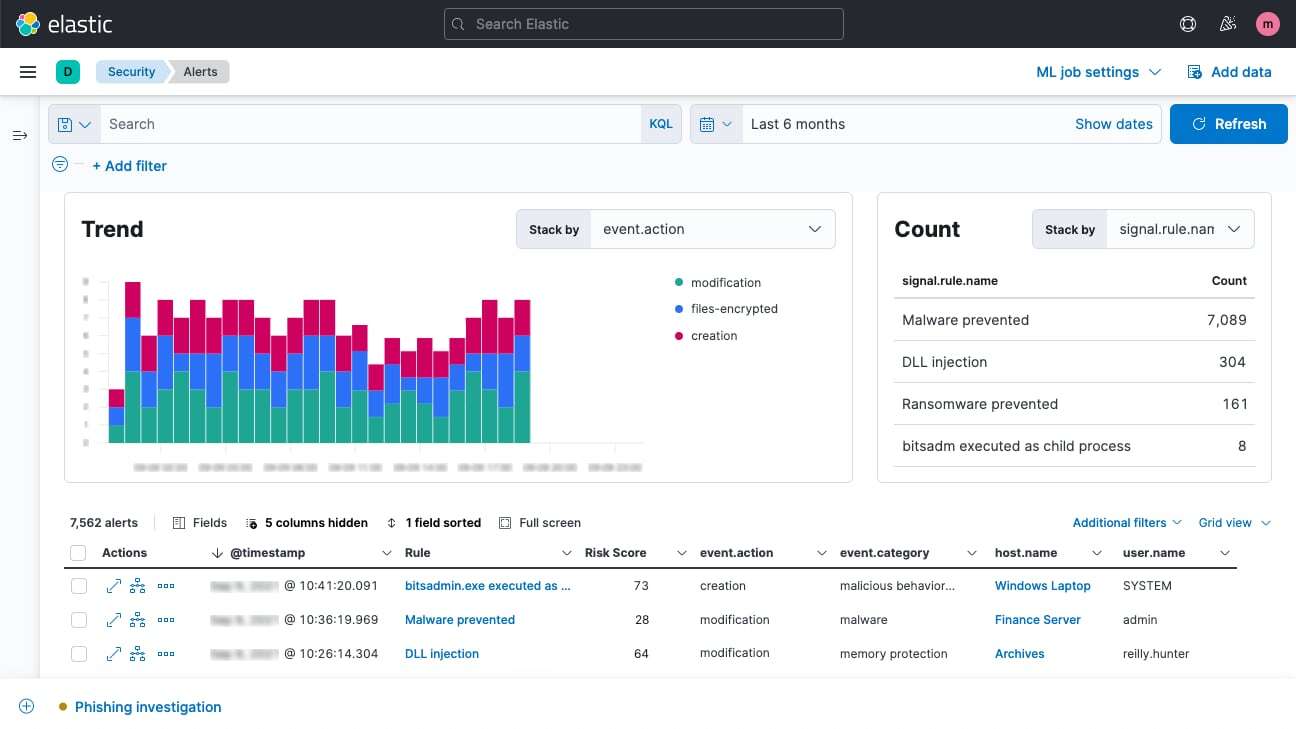Elastic 7.15: Create powerful, personalized search experiences in seconds
We are pleased to announce the general availability of Elastic 7.15, a release that brings a broad set of new capabilities to the Elastic Search Platform (including Elasticsearch and Kibana) and its three built-in solutions — Elastic Enterprise Search, Elastic Observability, and Elastic Security.
With Elastic 7.15 comes the general availability of the Elastic App Search web crawler and tighter integrations with Google Cloud — enabling our customers and community to more quickly create powerful new web search experiences, to ingest data more quickly and securely, and to more easily put their data to work with the power of search.
In addition, with Elastic Observability’s new APM correlations feature, DevOps teams can accelerate root cause analysis and reduce mean time to resolution (MTTR) by automatically surfacing attributes correlated with high-latency or erroneous transactions.
And, as the saying goes, if you’re going to observe... why not (also) protect?
To this end, with Elastic 7.15, Elastic Security enhances Limitless XDR (extended detection and response) with both malicious behavior protection for (nearly) every OS and one-click host isolation for cloud-native Linux environments.
Elastic 7.15 is available now on Elastic Cloud — the only hosted Elasticsearch offering to include all of the new features in this latest release. You can, of course, also download the Elastic Stack and our cloud orchestration products, Elastic Cloud Enterprise and Elastic Cloud for Kubernetes, for a self-managed experience.
Elastic Enterprise Search
Create powerful new web search experiences in seconds with the general availability of the Elastic App Search web crawler
With 7.15, Enterprise Search makes it faster than ever for organizations to get up and running with web search — freeing up technical teams to focus on other important projects. The Elastic App Search web crawler, now generally available, makes implementing search and ingesting website content nearly effortless. In addition to a number of web crawler improvements that make setup a snap, like automatic crawling controls, content extraction tools, and the ability to natively analyze logs and metrics in Kibana, the web crawler now enables customers to use a single platform to search all of their organization’s data — even websites.

To learn more visit the Elastic Enterprise Search 7.15 blog.
Elastic Observability
Automate root cause analysis for faster application troubleshooting
DevOps teams and site reliability engineers are constantly challenged by the need to sift through overwhelming amounts of data to keep modern applications performant and error-free. More often than not, this is a manual and time-consuming effort. To effectively resolve complex problems, these users need the ability to collect, unify, and analyze an increasing volume of telemetry data and quickly distill meaningful insights. Automation and machine intelligence have become essential components of the troubleshooter’s toolkit.
With Elastic 7.15, we’re excited to announce the general availability of Elastic Observability’s APM correlations feature. This new capability will help DevOps teams and site reliability engineers to accelerate root cause analysis by automatically surfacing attributes of the APM data set that are correlated with high-latency or erroneous transactions.
Streamline monitoring of Google Cloud Platform services with frictionless log ingestion
Elastic’s new Google Cloud Dataflow integration drives efficiency with the frictionless ingestion of log data directly from the Google Cloud Platform (GCP) console. This agentless approach provides an “easy button” for customers — eliminating the cost and hassle of administrative overhead and further extending Elastic’s ability to more easily monitor native GCP services.
To learn more visit the Elastic Observability 7.15 blog.
Elastic Security
With Elastic 7.15, Elastic Security augments extended detection and response by equipping Elastic Agent to end threats at the endpoint, with new layers of prevention for every OS and host isolation for cloud-native Linux environments.

Stop advanced threats at the endpoint with malicious behavior protection for Linux, Windows, and macOS hosts
Malicious behavior protection, new in version 7.15, arms Elastic Agent to stop advanced threats at the endpoint. It provides a new layer of protection for Linux, Windows, and macOS hosts, powered by analytics that prevent attack techniques leveraged by known threats. This capability buttresses existing malware and ransomware prevention with dynamic prevention of post-execution behavior. Prevention is achieved by pairing post-execution analytics with response actions tailored to disrupt the adversary early in the attack, such as killing a process to stop a payload from being downloaded.
Contain attacks with one-click host isolation from within Kibana
In addition to malicious behavior protection, with the release of Elastic 7.15, Elastic Security enables analysts to quickly and easily quarantine Linux hosts via a remote action from Kibana. With (just) one click, analysts can respond to malicious activity by isolating a host from a network, containing the attack and preventing lateral movements. While host isolation was introduced for Windows and macOS in version 7.14, it is now available on every OS protected by Elastic Agent.
We’re implementing this capability on Linux systems via extended Berkeley Packet Filter (eBPF) technology, a reflection of our commitment to technologies that enable users to observe and protect modern cloud-native systems in the most frictionless way possible.
For more information on our continuing efforts in the realm of cloud security, check out our recent announcements on Elastic joining forces with build.security and Cmd.
To learn more about what’s new with Elastic Security in 7.15, visit the Elastic Security 7.15 blog.
Elastic Cloud
Whether customers are looking to quickly find information, gain insights, or protect their technology investments (or all of the above), Elastic Cloud is the best way to experience the Elastic Search Platform. And we continue to improve that experience with new integrations that let customers ingest data into Elastic Cloud even more quickly and securely.
Ingest data faster with Google Cloud Dataflow
With Elastic 7.15, we’re pleased to announce the first-ever native Google Cloud data source integration to Elastic Cloud — Google Cloud Dataflow. This integration enables users to ship Pub/Sub, Big Query, and Cloud Storage data directly into their Elastic Cloud deployments without having to set up an extra intermediary data shipper, utilizing Google Cloud’s native serverless ETL service. The integration simplifies data architectures and helps users ingest data into Elastic Cloud faster.
Ensure data privacy with the general availability of Google Cloud Private Service Connect
We’re also excited to announce that support for Google Private Service Connect is now generally available. Google Private Service Connect provides private connectivity from Google Cloud virtual private clouds (VPCs) to Elastic Cloud deployments. The traffic between Google Cloud and Elastic Cloud deployments on Google Cloud travels only within the Google Cloud network, utilizing Private Service Connect endpoints and ensuring that customer data stays off the (public) internet.

To learn more about what’s new with Elastic Cloud, visit the Elastic Platform 7.15 blog.
Read more in our latest release blogs
- Elastic Enterprise Search 7.15 released
- Elastic Observability 7.15 released
- Elastic Security 7.15 released
- Elastic Platform 7.15 released
Test our mettle
Existing Elastic Cloud customers can access many of these features directly from the Elastic Cloud console. If you’re new to Elastic Cloud, take a look at our Quick Start guides (bite-sized training videos to get you started quickly) or our free fundamentals training courses. You can always get started for free with a free 14-day trial of Elastic Cloud. Or download the self-managed version of the Elastic Stack for free.
The release and timing of any features or functionality described in this post remain at Elastic's sole discretion. Any features or functionality not currently available may not be delivered on time or at all.
